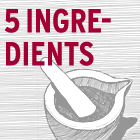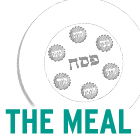
Kookoo-e Sabzi
Navruz is the Persian New Year festival. It is celebrated not only in Iran but also in Afghanistan, Kurdish regions, and Central Asia. Navruz, which literally means "new day," is held on March 21, which marks the end of the winter season, the onset of spring, and the beginning of field work.
The festival originated long before the emergence of Islam and has roots in the Zoroastrian religion. As a result, some of the more orthodox Islamic movements view this festival in a less than positive light. In addition to attempts to Islamize the holiday, there have been efforts to suppress it all together. This is why many Iranians see the festival as a subtle way of protesting against the country’s islamification.
For Navruz, a table is festively decorated with Haft Sin. Haft Sin is an ensemble of seven dishes and objects all of which start with the letter Sin. They include wheat sprouts or fresh herbs (sabze), garlic (sir), apples (sib), and coins (sekke). They symbolize regeneration, health, love, and all the other good things that one wishes in the New Year.
The fresh green omelet with herbs, called kookoo-e sabzi, is one of the traditional dishes and essential elements of the Navruz dinner.





